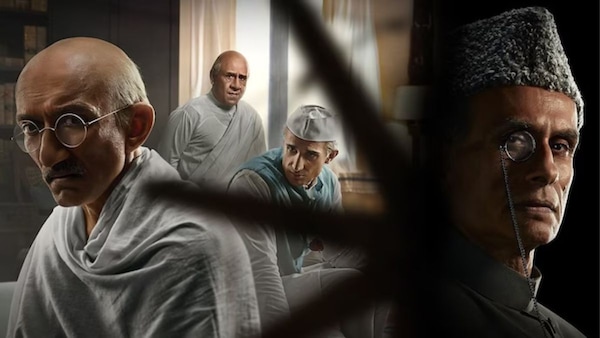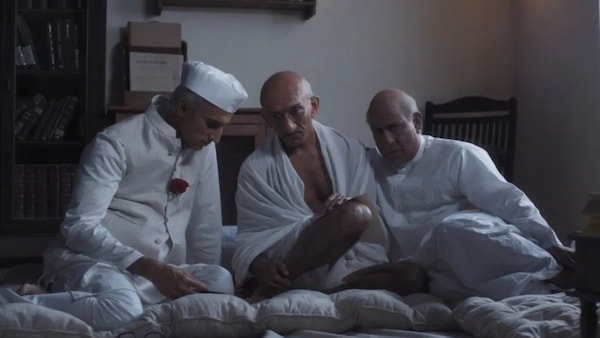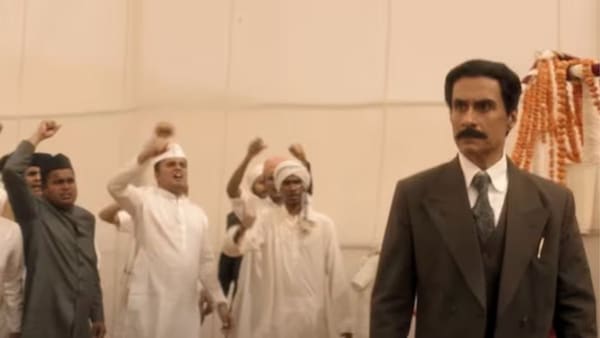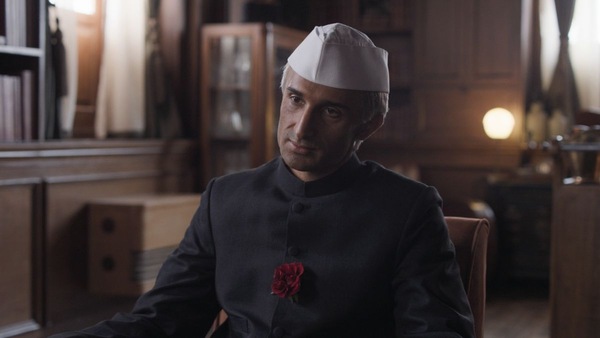Freedom At Midnight: Nikhil Advani’s Pre-Independence Drama Is Immensely Watchable
Freedom at Midnight is about the historicity of 1947 conveyed through the lives of those who curated the history.

Promo poster for Freedom at Midnight.
Last Updated: 03.20 PM, Nov 15, 2024
WITH Freedom at Midnight, Nikhil Advani continues looking at big cultural moments through the microscopic gaze of an insider. Across the two seasons of his breakout show Mumbai Diaries, the filmmaker portrayed pressing social crises through the labour of medical practitioners attending to the casualties. This shift in slant sidestepped the showiness prone to cinematic excess and allowed for a more intimate rendering of public events, transforming, therefore, the narrative around them. In his latest long-form work, Advani turns his gaze to the wide spectrum of India’s independence and reiterates his style of focusing on the bureaucratic bottleneck, telling the story therefore of the people living inside towering buildings and not on the street. Freedom at Midnight is about the historicity of 1947 conveyed through the lives of those who curated the history.
On paper little about this is inventive. Traditionally, the fight for India’s freedom has been told through vivid accounts of sacrifice. Advani’s series although relays similar stories — pre-Partition riots, Lord Mountbatten’s arrival to finalise the transfer of power, Mahatma Gandhi’s adamant opposition to religion-based division — unfolds as a departure in its refusal to valourise these personalities. Instead, the show does a compelling job of going beyond the embellishments and stitching together complex portraits of their personhood.

A big reason for this is the source material. Freedom at Midnight is adapted from Larry Collins and Dominique Lapierre’s 1975 titular book that is an ear-to-the-door record of the trials of 1947. At a time when the landscape of Hindi-language storytelling is clogged with historicals too busy taking sides, a series about India’s independence from outsiders’ perspective imbues the narrative with an objectivity that comes closest to being impartial. There is also the decisive timeline (1946-47) which, being close to the final destination, shoves resistance to the background and puts forth a group of flawed individuals, each as vulnerable to power as the other.
With the trappings of reverence gone, Advani gets a large field to play in, and he does. Freedom at Midnight is at once an urgent depiction of a nation coming on to its own and an irreverent portrayal of the leaders navigating the change. In the process, the seven-episode series unravels with a campiness hard to not be taken by. Political leaders, canonised in history books, freely make snide remarks at each other. Mohammad Ali Jinnah (a formidable Arif Zakaria) refers to Gandhi (Chirag Vohra) as a “wily old man” and Jawaharlal Nehru as “Peter Pan”. That Sidhant Gupta, a young actor, is chosen to play a much older, gaunt and existential Nehru adds subtext to the slight.
Freedom at Midnight stands on such verbal affronts. Designed as a chamber drama, news about Partition, and riots as a response to that leak into closed rooms through phone calls. The series resists depicting, barring a few exceptions, harrowing recreations of communal altercations. What we see are the faces of Nehru, Jinnah or even Sardar Vallabhbhai Patel (Rajendra Chawla) reacting to them.

In that sense, the outing is as unusual as a Partition drama as it is as a rousing story of India’s independence. Advani orchestrates the transfer of power, with Mountbatten coming in and bargaining with the Indian National Congress (INC), led by Vallabhbhai Patel and Nehru, and the Jinnah-helmed Muslim League, as a thriller. It is not the most obscure story in history but the way it is retold makes it a nail-biting suspense. The narrative (Abhinandan Gupta, Gundeep Kaur, Adwitiya Kareng Das, Divy Nidhi Sharma, Revanta Sarabhai and Ethan Taylor are credited for the writing) is lithe as the expositions are ferried through newspapers and radio voiceovers. The filmmaking only adds to it. The music leading up to the discussions and indecisions is operatic (Ashutosh Pathak has scored the background music), reaching for multiple crescendos, and timelines are played with (Shweta Venkat is the editor) to add a sense of intrigue.
At its heart, Freedom at Midnight is about how we remember a certain time and how certain people want to be remembered by time. The conflict between both is the show. Nehru is presented as a man torn between legacy and ambition. It is a sombre rendition, tedious in how distant he appears from ground reality (a criticism Congress continues to contest). This is Gupta’s second stint in the pre-Independence era (his breakout show Jubilee was the first) and although this is a strange casting choice, the actor is unusually effective. His hollow eyes and Hrithik Roshanesque diction humanise Nehru and make him one among the crowd. There is also Vohra as Gandhi. Coming fresh from the success of Scam 1992, the actor inherits Gandhi’s mannerisms without mimicking them, culminating in a turn that will outlive the show. But it is Chawla as Vallabhbhai Patel who inhabits the greyness of the persona with aching sincerity. Chawla has been a ubiquitous presence in prime-time serials and yet he brings a tremendous amount of newness to the portrayal of Patel, as the sole leader of Congress attuned to local situations and less burdened with the beckons of the future.

The pitfall of Freedom at Midnight comprises its refusal to extend this complexity to the Muslim League members, especially Jinnah. The portrayal is one-dimensional, leaning on an anarchist blinded by ambition. The last episode comes closest to providing context to his desire for a separate nation for Muslims but it is too little and comes too late. Even for the communal riots scenes, the show stresses that it is always the Muslims initiating the attacks and although there is a fleeting scene of a man wearing a skull cap protecting the women in Punjab, the visual remains unsupported by verbal assurance.
If this becomes difficult to overlook, it is because we reside at a time when making historicals and biopics have become excuses for makers to streamline history for propaganda. Freedom at Midnight veers close but the suggestion is offset by its crafty description of a pre-Independent India and revealing the clay feet of the leaders who marched us to freedom at midnight. In that sense, it is not too different from Mumbai Diaries. Both these works look at big cultural moments through the microscopic gaze of an insider and foreground the tragedy hidden in the triumph.
Freedom at Midnight is currently streaming on Sony LIV.

 Premium
Premium